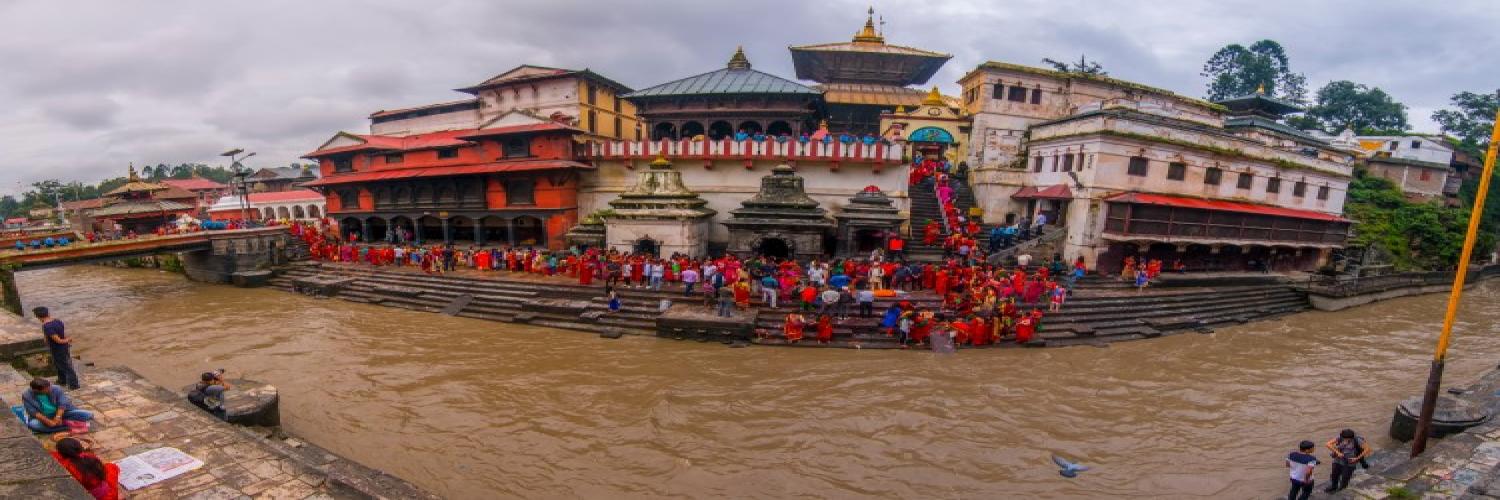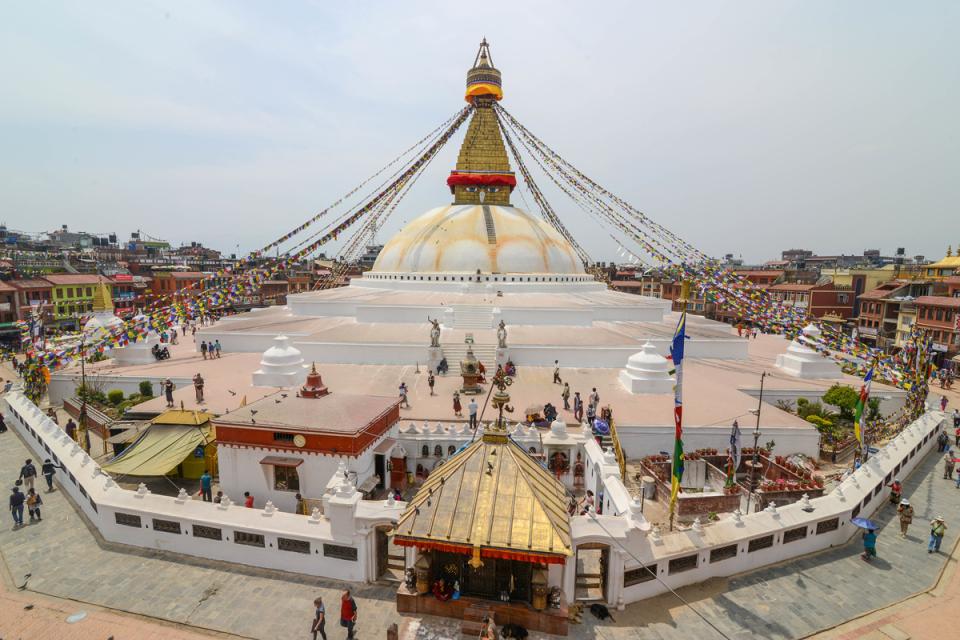Teej Brata, commonly known as Teej, stands out as one of the most vibrant and culturally significant festivals celebrated in Kathmandu Valley and throughout Nepal. This annual celebration holds a special place in the hearts of Hindu women, honoring their devotion, purity, and the unbreakable strength of marital bonds. Rooted deeply in religious mythology and longstanding traditions, Teej Brata goes beyond mere ritual - it is a heartfelt homage to womanhood and family unity.
The festival’s origins trace back to tales of Goddess Parvati’s unwavering dedication to Lord Shiva, inspiring women to pray for the long life and well-being of their husbands. However, Teej Brata is not solely a spiritual observance; it is also a lively social occasion marked by colorful rituals, traditional songs, and communal gatherings. Women dress in vibrant red saris, fast with devotion, and participate in joyous processions, embodying cultural pride and collective harmony.
Celebrated with great enthusiasm, Teej Brata serves as a reminder of the vital role women play in preserving family traditions and nurturing social bonds. Through its blend of sacred customs and festive spirit, the festival brings communities together, creating moments of reflection, gratitude, and joyous celebration that resonate year after year.
The Significance of Teej Brata
At its core, Teej Brata is a celebration of Goddess Parvati, the divine embodiment of love, fertility, and marital bliss. According to Hindu mythology, Parvati’s unwavering devotion and penance to reunite with Lord Shiva inspire the festival. Married women fast and pray for the long life, health, and prosperity of their husbands, while unmarried women participate with hopes of finding a loving and devoted spouse. Teej Brata reflects themes of dedication, sacrifice, and the power of prayer, showing how spiritual devotion sustains family and social bonds.
This festival is much more than just fasting - it’s a celebration of womanhood and resilience. It symbolizes the sacred union between husband and wife and honors the cultural values passed down through generations. The ritual fasting is a physical expression of devotion and self-discipline, while the accompanying celebrations are joyful affirmations of community and shared heritage.
When and How Is Teej Celebrated?
Teej is observed according to the lunar calendar, typically falling in the months of August or September (Bhadra month in the Hindu calendar). The celebration lasts for three days, with each day holding its unique importance and set of rituals:
-
Dar Khane Din (Day of Feast): The festival begins with a grand feast where women gather with family and friends to enjoy traditional dishes and sweets. This day is filled with laughter, singing, and storytelling. It’s a time to prepare emotionally and spiritually for the upcoming fast, strengthening community bonds.
-
Teej Fasting Day: The heart of the festival, this day is marked by rigorous fasting from food and water by married women. Dressed in bright red saris - symbolizing marital bliss and fertility and adorned with intricate henna designs and jewelry, women visit temples to offer prayers to Goddess Parvati and Lord Shiva. The fast is seen as a powerful spiritual exercise to seek blessings for their husbands’ longevity and family well-being.
-
Rishi Panchami: The concluding day of Teej involves ritual purification, where women offer homage to ancient sages (Rishis) and seek forgiveness for any sins. Special ceremonies and offerings cleanse the body and soul, completing the sacred observance.
Throughout these days, traditional songs known as Teej songs are sung, narrating stories of love, sacrifice, and the divine union of Parvati and Shiva. The festival is not just a religious observance but a cultural celebration of feminine strength, unity, and faith.
Rituals and Traditions
Teej Brata is deeply embedded with rituals that carry symbolic meanings and cultural richness. Women throng temples dedicated to Goddess Parvati, particularly the famous Pashupatinath Temple in Kathmandu, where large crowds gather to participate in prayers and pujas.
One of the most visually striking traditions is the swinging on elaborately decorated swings hung from trees, symbolizing joy and freedom, and creating an atmosphere of celebration and sisterhood. These swings are often beautifully adorned with flowers and red fabrics, where women laugh and sing as they sway back and forth.
The fasting, while demanding, is seen as an act of devotion and spiritual cleansing. The prayers include offerings of fruits, flowers, and sacred red tika marks on the forehead. Women also exchange gifts such as sweets, bangles, and small tokens of goodwill, reinforcing social bonds.
Why Teej Is Special in Kathmandu Valley?
Kathmandu Valley’s celebration of Teej Brata is a vibrant reflection of Newari and broader Hindu cultural traditions blending seamlessly. The city streets come alive with women dressed in brilliant red and adorned with traditional jewelry, moving from home to temple to community gatherings.
The festival offers a unique insight into the role of women in Nepalese society - balancing devotion, familial responsibility, and social celebration. The energy is palpable as neighborhoods unite in singing, dancing, and feasting, making it a truly communal event. Teej also highlights Kathmandu’s rich cultural tapestry, showcasing how ancient traditions are alive and relevant even in today’s modern world.
What to Expect If You Visit During Teej?
Visiting Kathmandu during Teej offers a fascinating window into Nepalese culture. Expect to witness:
-
Women elegantly dressed in vibrant red saris, with henna-decorated hands, participating in temple rituals.
-
Groups of women gathering to sing traditional Teej songs, recounting the legends of Goddess Parvati.
-
Festive swings decorated with flowers where women share laughter and stories.
-
Local markets bustling with vendors selling red bangles, tika powder, sweets, and festive clothing.
-
A warm, welcoming atmosphere where you can learn about the spiritual significance of the festival.
-
Temples like Pashupatinath filled with devotees engaging in prayer and offerings.
Teej offers an enriching cultural experience that combines spirituality, tradition, and community joy, making it a must-see for travelers interested in Nepal’s heritage.
Conclusion
Teej Brata is much more than a festival - it is a vibrant celebration of womanhood, devotion, and cultural identity in Kathmandu Valley. With its blend of sacred rituals, heartfelt fasting, joyous singing, and community bonding, Teej embodies the spirit of Nepalese tradition and resilience. Whether you are a cultural enthusiast or a curious traveler, experiencing Teej offers a unique opportunity to witness the deep faith and colorful customs that enrich Nepalese society.
To explore Teej Brata and other cultural festivals in Kathmandu, contact Best Heritage Tour:
Visit: www.bestheritagetour.com
Email: info@bestheritagetour.com / bestheritagetour@gmail.com
Phone / WhatsApp / Viber: +977-9851149197
Office: Thamel Marg, Kathmandu, Nepal
Author: Best Heritage Tour
Date: 6th August, 2025


